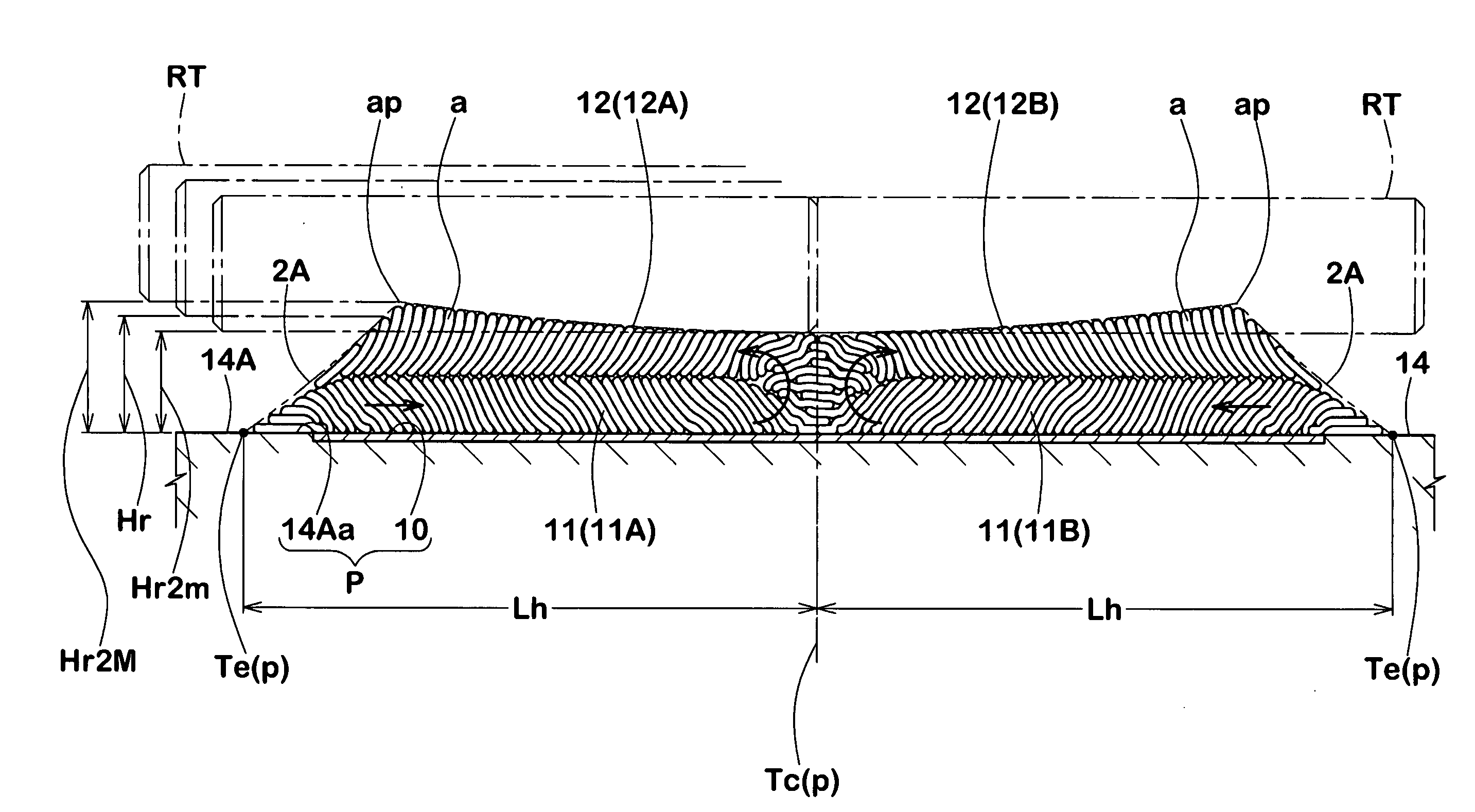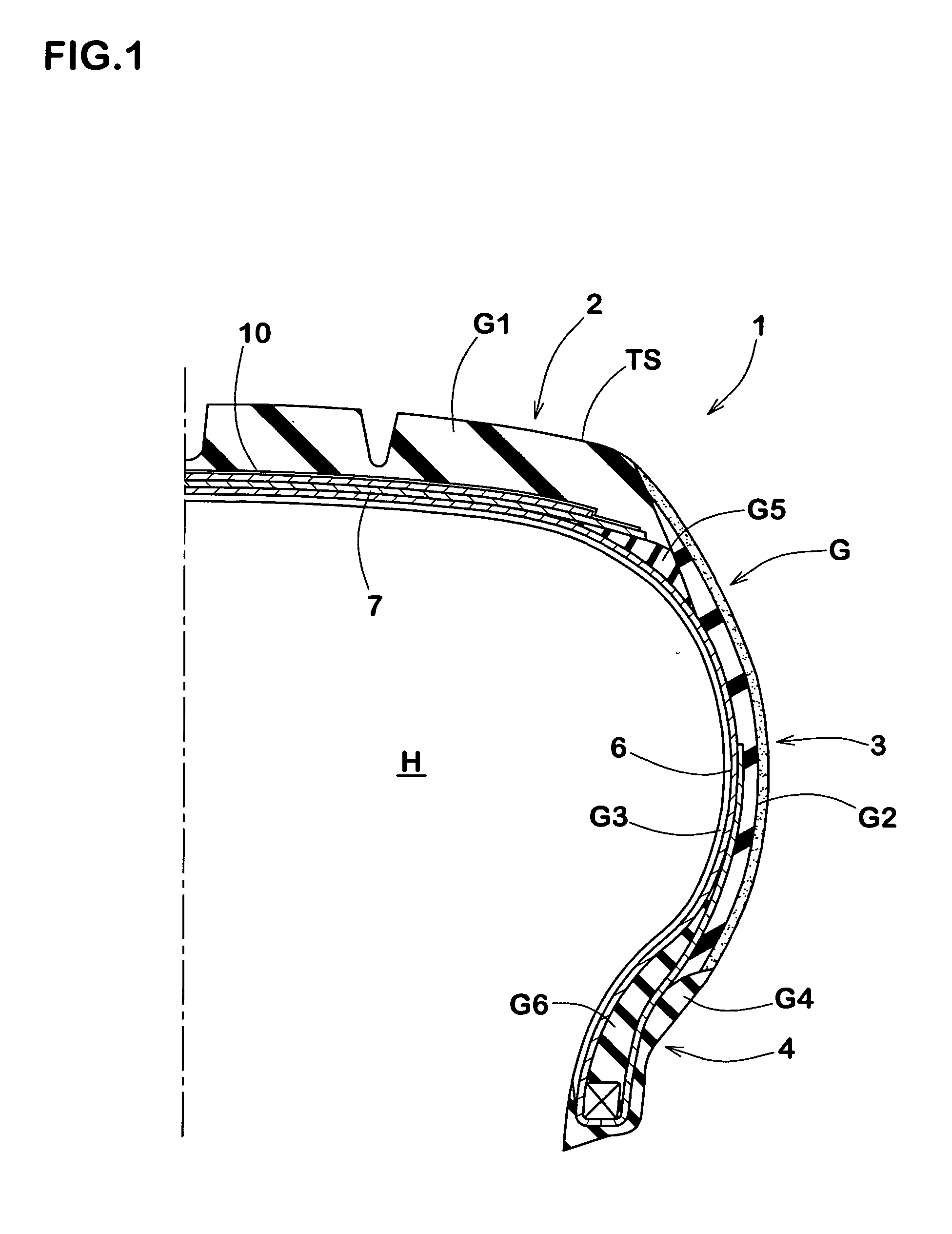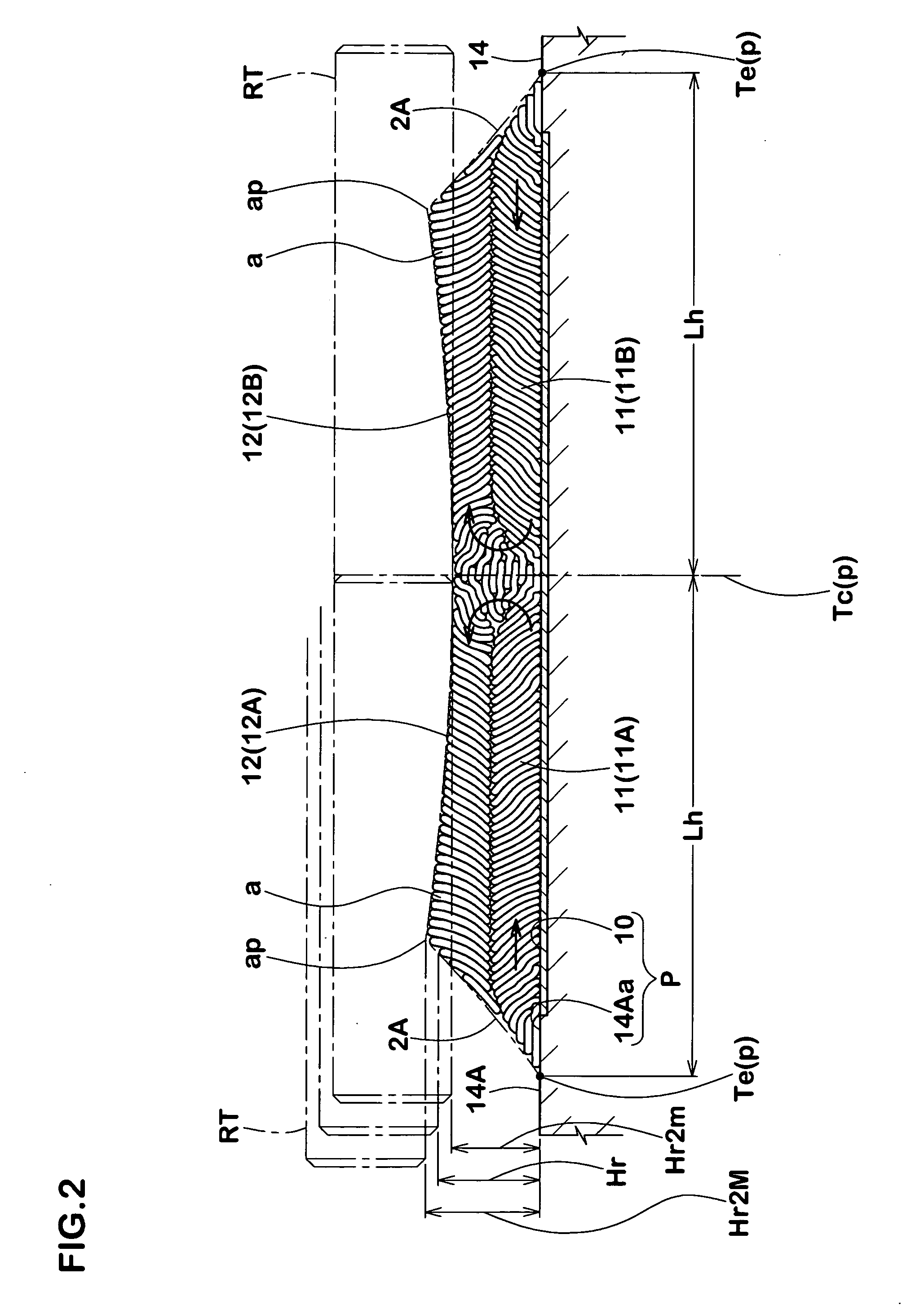Manufacturing method of rubber member for tire
a rubber member and tire technology, applied in the field of strip wind construction method of forming a rubber member for a tire, can solve the problems of increasing risk, reducing productivity, and generating air reservoirs, and achieve the effect of effectively transmitting the pressing force and high precision
- Summary
- Abstract
- Description
- Claims
- Application Information
AI Technical Summary
Benefits of technology
Problems solved by technology
Method used
Image
Examples
examples
[0055] There is manufactured a tread rubber G1 of a pneumatic radial tire for a passenger car on the basis of a tire size of 215 / 45ZR17 and a specification shown in Table 1. A test is executed about a performance thereof. In this case, a rubber strip is set to be identical. Results thereof are shown in Table 1. In the tested specification, FIGS. 2 and 3 are set to an example 1, FIGS. 5 and 6 are set to an example 2, FIG. 9 is set to a comparative example 1, and FIG. 10 is set to a comparative example 2.
TABLE 1ExampleExampleComparativeComparative12Example 1Example 2Specificationand 3and 6Rubber strip15 × 115 × 130 × 130 × 1width × thick-ness (mm)Uniformity52535957RFV (N)
[0056] Twenty tires are manufactured for each of the tires, and a uniformity is measured. The uniformity is measured as a radial force variation (RFV) on the basis of a uniformity test condition of JASO C607:2000. An evaluated speed is set to 10 km / h. Results are expressed by an average (N) of twenty tires, and the ...
PUM
| Property | Measurement | Unit |
|---|---|---|
| width | aaaaa | aaaaa |
| width | aaaaa | aaaaa |
| thickness | aaaaa | aaaaa |
Abstract
Description
Claims
Application Information
 Login to View More
Login to View More - R&D
- Intellectual Property
- Life Sciences
- Materials
- Tech Scout
- Unparalleled Data Quality
- Higher Quality Content
- 60% Fewer Hallucinations
Browse by: Latest US Patents, China's latest patents, Technical Efficacy Thesaurus, Application Domain, Technology Topic, Popular Technical Reports.
© 2025 PatSnap. All rights reserved.Legal|Privacy policy|Modern Slavery Act Transparency Statement|Sitemap|About US| Contact US: help@patsnap.com



